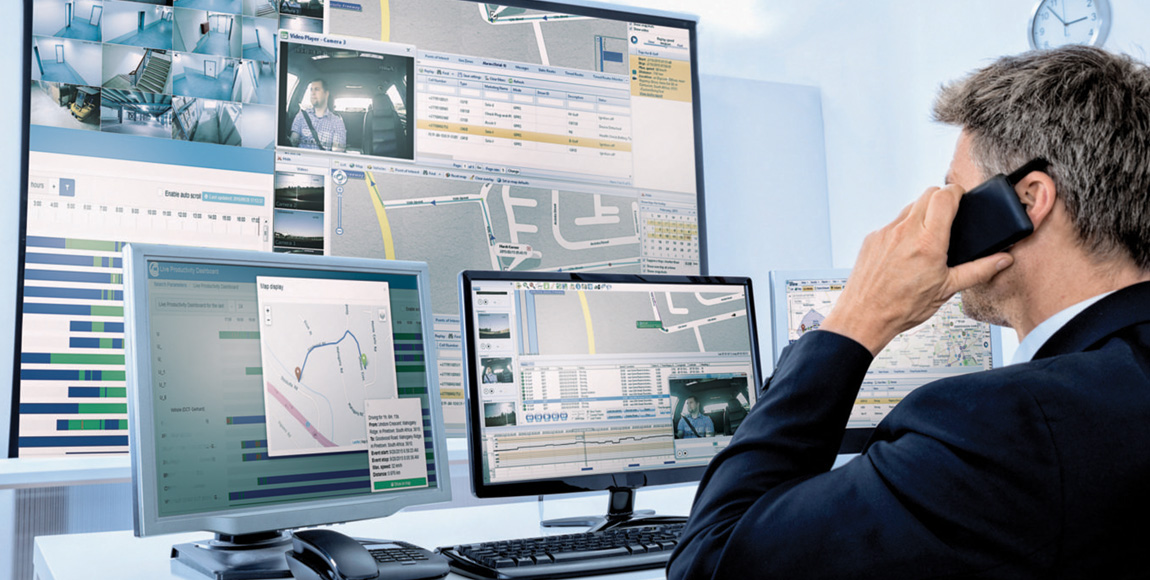Get out of the truck!

These are the words too often heard by truckers when they’re held at gunpoint during a truck hijacking. We discover who the perpetrators are, how hijacking occurs, what it costs the South African economy, what anti-hijacking technology is available and what advice experts can offer
There are no exclusions when it comes to choosing a victim in the complex business of truck hijacking. All trucks are potential targets. This is because the objective of most hijackers is to take the cargo.
Targeted cargo items are most often electronics such as laptops and televisions, and everything from household appliances to tyres, cigarettes, liquor and even bread. Many drivers transact on a cash-on-delivery basis, so these vehicles also become a target.
Hijacking to obtain the actual vehicle is less common, and fewer instances of hijackings occur with fuel tankers and vehicle transporter trucks.
Most truck hijackings are conducted by “professionals” who have a plan, says Charles Morgan, executive for operations at Netstar. An example of this would be when a truck is pulled over and the trailer containing the cargo is disconnected from the horse, connected to the hijackers’ horse, and then immediately driven away.
Once the trailer is in a secure location, the cargo might be offloaded, or loaded onto a different trailer and
moved again. The driver is usually kept hostage at a separate location until the hijackers believe they are safe. The only positive in this situation is that drivers are generally left unharmed if they comply with the hijackers’ instructions.
Who is involved?
Allegations are often made that hijackings are “an inside job”. According to experts, this can involve the drivers themselves and other staff of the trucking companies. While better screening of employees is helpful, an employee can be “turned” at any point if tempted or coerced. These days, members of the South African Police, Metro Police, private security companies and even military personnel can also be involved in hijacking operations.
How does it happen?
Syndicates first utilise inside information from depots to establish load types, destinations and times of departure. Then the actual hijacking takes place, usually by way of forcing drivers at gunpoint to pull over and stop. “A common tactic is to place fake police blue lights on vehicles to stop trucks,” explains Morgan.
According to Adv. Johan Jonckie from Arrive Alive, staging is another common tactic – a scenario is presented to look as normal and innocent as possible, for example, a police roadblock, a broken-down car, a hitchhiker, indicating an imaginary fault on the truck, or forcing a collision.
“Sophisticated criminals now deploy signal jammers, diversion tactics, infiltration teams and blackmail, and even plant employees in organisations to gain access to products or assets and obtain insider knowledge about routes and cargo,” says Henry Smith, fleet sales director at MiX Telematics Africa. Criminals have also become increasingly more professional in terms of techniques and processes.
Hijackers also use the element of surprise. Adv. Jonkie says: “They will typically wait for the truck to slow down or stop naturally and assault the driver after gaining access to the vehicle using the element of surprise. Stopped vehicles with resting drivers are also particularly at risk, as are vehicles inside depots and yards.”
Insights into the cases experienced at Netstar indicate that the majority of hijackings occur very late in the evening, right through to the early hours of the morning. This is typically to take advantage of quieter roads and the cover of darkness.

Anti-hijacking technology
Trucking companies have many sophisticated technology-based solutions available to them. “Fleet-tracking devices should be a primary tool in helping to combat hijackings,” says Morgan. “A very important aspect to consider when choosing a tracking solution is to check if it has a method of combatting GSM jamming. Criminals use illegal GSM jammers in a large majority of cases to prevent tracking solutions from communicating with control centres – thereby ‘blinding’ fleet controllers.”
By planning routes to be used, the potential time of arrival, and monitoring for this, personnel from a remote location can usually identify that there may be suspicious activities taking place.
Some tracking companies offer route-monitoring services where these activities, and other details, are monitored, and actions taken accordingly.
Panic buttons installed in the trucks are also a good way to raise the alarm. And using connected video-streaming technology in vehicles can help fleet controllers view current vehicle footage remotely.
Surveillance and tracking
Tracking devices use communication networks, such as cellular networks, to communicate information to and from the tracking device. According to Morgan, this can include the GPS speed, direction, ignition status, fuel levels, temperature of cargo area, and a multitude of other sensory information.
A host of commands can be triggered remotely for the tracking device to act upon, for example, the device can be used to switch outputs on the truck to open locks, to provide sound alerts and more detailed information.
Fleet owners can also install cameras onto their fleet vehicles for a more robust risk-mitigation solution.
Cameras can be installed to face fuel tanks in order to monitor any theft or tampering; to face the driver to monitor driver behaviour; and to face the rear of the
vehicle to capture any external triggers that may be useful in the event of an insurance claim, for example. The surveillance and real-time monitoring of all of these events takes place via control centres where data is analysed to help make accurate and timely decisions affecting the fleet.
Impact on the South African economy
Smith says: “According to the South African Insurance Crime Bureau, truck hijackings currently cost the South African economy R3 billion a year.”
Morgan explains: “Cargo theft, in particular, has a ripple effect on the supply chain that goes beyond the stolen goods. This includes increased insurance premiums for logistics businesses, decreased customer satisfaction or brand loyalty, loss in sales, stock replacement and shipping costs and unplanned downtime.”
The increased costs suffered in the supply chain will ultimately impact the pockets of the consumer, as the cost of goods increases to offset the losses. In a country where disposable income is already stretched, truck hijackings can have a devastating social and economic impact.
How to reduce the risk of being targeted
Smith says the challenge is often that many commercial trucking operations are geared for profit and not necessarily for secure operations. This raises a question regarding the effectiveness and level of preparedness of many fleet operators’ control rooms, fleet management systems, and driver and staff training to react in a crisis situation.
“The processes and risk-mitigation strategies within organisations need to be professionally developed in order to make coercion and attack as risky as possible for criminals,” says Adv. Jonckie.
Preparedness is not only about what drivers need to do when they are hijacked, but also how to detect a potential hijacking scenario, what emotional and physical reactions to expect when falling victim to a hijacking, what to do to stay alive during a hijacking, and what to try to focus on to help in the post-event analysis and intelligence-gathering.
Drivers should be aware of the following:
• Consider every unscheduled stop a possible assault. No matter whether it is a police roadblock, collision, cattle or a broken vehicle – follow “assault protocol” and prevent an attack.
• Keep doors locked. The passenger door is the most common access point for hijackers.
• Do not pick up hitchhikers – not even women! In a recent attack, a driver passed out after being given a drink by a woman. He woke up five hours later, tied up in the field, and his truck was gone.
• Stay in touch with the control room. If a stop is planned, tell them where and for how long, and what other vehicles/people are present. List number plates if possible.
• If a hijacking occurs, do not resist. Very few hijackings (currently) result in serious injury or fatalities, but there have been many fatalities in cases where drivers resisted.
• Do not use the panic button for anything other than an emergency. This can result in panic alarms being ignored when there is a real emergency.
• Use the truck for protection if necessary – if any effort is made by a light vehicle to stop you, call the police or controller/tracking company for guidance and, if instructed to, use the truck as a defensive tool.
• Do not trust anyone. Hijackers come in all shapes, sizes, races and sexes. Be suspicious and stay alert.
When reporting a hijacking, it is imperative to provide as much detail as possible about the incident, especially when reporting on active hijacking and recovery groups, for example, on WhatsApp. Where there is a lack of information, there is a lack of forward planning. Operators who provide only basic details frustrate efforts and demotivate operators when vehicles are lost.
Published by
Focus on Transport
focusmagsa




